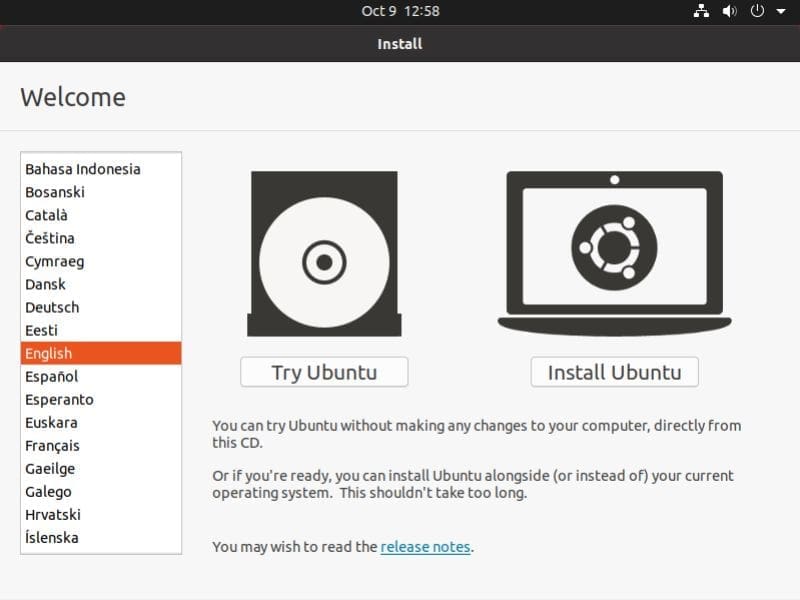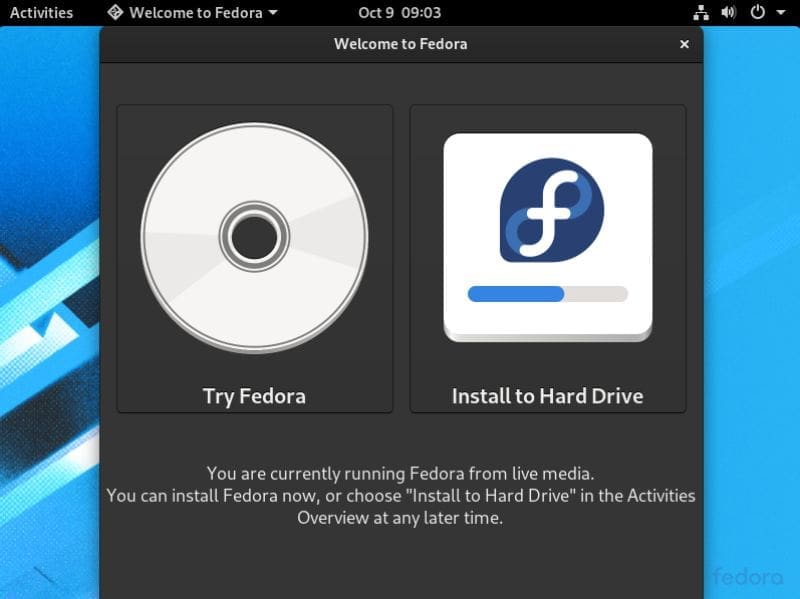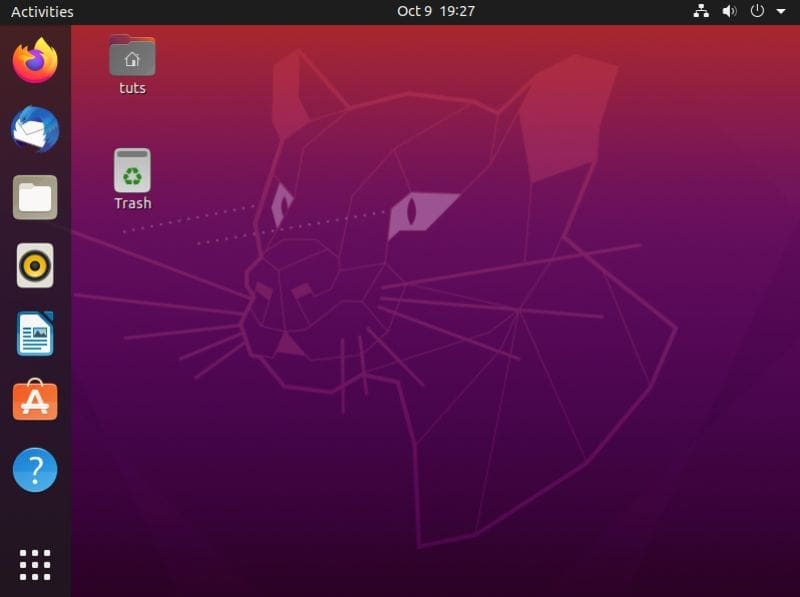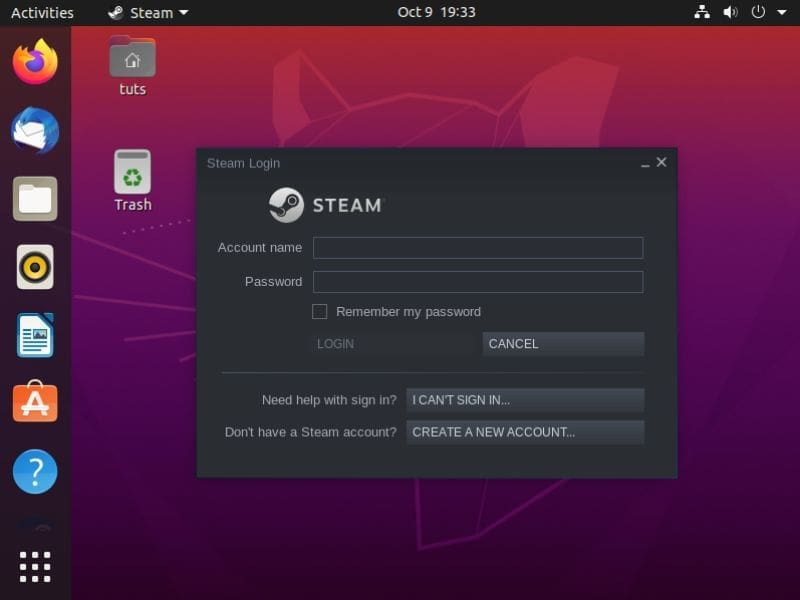Both Ubuntu and Fedora are among the most popular Linux distros on the market. As such, there is an on-going debate in the Linux community concerning the better distro among the two – Ubuntu vs. Fedora.
With that being said, both distros are targeted at different users with different needs. So depending on what you plan to do on your computer, installing one distro will prove beneficial over the other.
This is why we will be moving away from the mainstream debate and focus on discussing the major differences between Ubuntu and Fedora. By the end of this read, you should have a solid understanding of what both distros have to offer, and thereby, which one is right for you.
Ubuntu Vs. Fedora: 9 Major Differences
Before we tell you which distro is right for you, let’s understand the basic differences between them. Here we have arranged an in-depth analysis of the 9 major differences between Ubuntu and Fedora. We will be discussing everything from the finer technical stuff to differences that directly affect the end-user experience.
So without further ado, let’s get started:
#1. Base Distribution & Enterprise Support
Both Ubuntu and Fedora are related to two of the most reputed titans in the Linux community. Ubuntu is based on Debian, whereas Fedora is upstream (testing ground) of Red Hat.
For those of you who don’t know, Debian is one of the oldest and largest community-driven projects in the Linux world. Canonical, Ubuntu’s parent company, adopted the Debian core in building its own, highly-customized Ubuntu distro.
Ubuntu’s main goal is to build and deliver a user-friendly operating system focusing on usability and stability. As such, you will find tons of tweaks and customizations, which can make Ubuntu feel more cluttered and bloated compared to Debian.
That being said, Ubuntu still uses the same filesystem architecture, package managers, and repository formats as Debian. We will go more in-depth into these aspects in a later section.
On the other hand, Fedora is developed by the community-supported Fedora Project and is sponsored by Red Hat – the company behind RHEL (Red Hat Enterprise Linux) distro. And even though it uses the RHEL core, it wouldn’t be technically correct to say that Fedora is “based on” Red Hat Enterprise Linux.
Fedora serves as a testing ground for RHEL. So before you get to see any feature released on RHEL, it will be released and tested on Fedora first.
This makes Fedora home to all the bleeding-edge technologies coming out in the Linux world. But at the same time, users will also experience more bugs and glitches since everything is new and not thoroughly tested.
#2. Installation
Both Ubuntu and Fedora ship with modern installers that offer an intuitive installation process for respective operating systems.

Ubiquity Installer
With Ubuntu, you get access to their proprietary Ubiquity installer. It is one of their original features that sets it apart from Debian. It gives the users access to an easy installation wizard that basically holds the users’ hands while installing the OS.
The entire installation process will hardly take more than 10 minutes – considering that your systems meet the minimum requirements for running Ubuntu. Furthermore, if you have Windows installed on your hard drive, Ubiquity will automatically detect it and help you configure a dual boot with Ubuntu and Windows.

Anaconda Installer
Fedora ships with the Anaconda installer, which is what we see with all other Redhat OSes. But the cool thing with Fedora is that it always comes with the latest version of Anaconda.
It, too, offers an intuitive and straightforward installation process, similar to that of Ubiquity. But the key difference between Ubiquity and Anaconda is that it offers a lot more flexibility over the former.
With Anaconda, you can configure and customize the OS right from the start – during the installation process. You get to choose which software you want to have installed on the OS on the first boot.
#3. Default Desktop Environment
The desktop environment is responsible for the GUI and how you interact with the OS. Now, the best thing about any Linux distro is that it allows you to choose and install from a wide variety of desktop environments, allowing you to have total control over how you want to use your OS.
All distros ships with a default desktop environment that is officially supported by the developers.
In the case of Fedora and Ubuntu, since they are so popular with a huge community backing, many desktop environments are supported by both distros, with GNOME being the default option.

Ubuntu Desktop
Ubuntu used to ship with their own custom desktop environment called Unity. However, as of Ubuntu 17.10, they have shifted to the GNOME shell. That being said, the developers have heavily customized GNOME to look and feel like their Unity desktop so that long-term users will feel at ease.

Fedora desktop
In the case of Fedora, you are getting access to pure vanilla GNOME, and that too, with the latest updates. As soon as a new GNOME version is released, Fedora is always amongst the first to implement it.
As such, if you wish to experience GNOME as intended by its developers before anyone else, then Fedora is the way to go.
You can also check out the provided link if you are looking for the best GNOME-based Linux distros.
#4. Package Managers
Ubuntu and Fedora use different package managers that function differently and use different packaging formats. But that being said, both of them are very good at their job.
With Ubuntu, you have APT (Advanced Package Tool) package manager, which it inherits from Debian. It is one of the largest and oldest package managers in the Linux community. APT is designed to work with the .deb package format, which archives the files in a format specific to Debian and other Debian based distros.
Now, APT can do a lot of things, but it requires explicit commands to do them. For example, if you wish to install the latest Firefox version, you will first need to command APT to update its repository and then install Firefox.
$ sudo apt update $ sudo apt install firefox
Earlier versions of Fedora used YUM (Yellowdog Update Manager) package manager, but now they have switched to the DNF package manager. That being said, DNF functions the same way as YUM, so users will have no problem in the transition except for using DNF in the commands instead of YUM.
With the DNF command, you will be able to manage and install .rpm packages on your Fedora system. At a technical level, DNF offers much more reliability, speed, and usability improvements over APT.
For example, you can use a single DNF command to install Firefox. It will automatically update the repository and fetch the latest version.
$ dnf install firefox
#5. Repositories
Most Linux software developers provide their apps in both .deb and .rpm file formats.
However, due to Ubuntu’s massive popularity and larger userbase, some software vendors only provide DEB packages or choose to release their apps in .deb format first. On the contrary, you will rarely find an app or software exclusively available as an RPM package and not DEB.
Furthermore, Ubuntu offers a vast collection of software containing both FOSS and non-FOSS options. Fedora’s decision to go with open-source software has limited its repository from growing to a scale comparable to that of Ubuntu.
That being said, the newer version of Fedora seems to make it much easier to install proprietary software on the OS, and the repository is populating with more options. However, it will be a long time before it becomes as big as that of Ubuntu.
#6. Gaming & Hardware Support

Running Steam on Ubuntu
Back in its earlier days, Linux failed to support new hardware, and compatibility issues plagued almost all distros, including Ubuntu and Fedora. However, with time, the OS came under the manufacturer’s radar, and they started to optimize their hardware for the Linux OS.
Currently, Linux has built a reputation of running smoothly on both older and newer hardware. In fact, if you are up for the challenge, you can even run Linux on a toaster. However, users still face issues when it comes to installing graphic drivers on their Linux PC.
For Intel and AMD users, Fedora and Ubuntu both offer the same drivers, and there are rarely compatibility issues. The main problem is with Nvidia graphic cards, which require proprietary drivers to function properly.
This is another one of the areas where Ubuntu gets the win over Fedora. Since Ubuntu allows for easy installation of non-FOSS software, you can easily install the proprietary Nvidia drivers on your Ubuntu PC.
Whereas, in the case of Fedora, it only provides you with open-source software. This makes it considerably harder to install the proprietary Nvidia drivers on the OS.
That being said, there is an open-source Nouveau driver developed for Nvidia graphic cards on Linux OS. But beware that it runs into the occasional system crash and system freeze during boot time.
Taking all of these into account, gaming and hardware support are clearly better on Ubuntu in comparison to Fedora.
#7. Release Cycle
Ubuntu and Fedora follow different development cycles and release newer versions at different rates.
With Ubuntu, you have the option to choose between two release cycles. First, there is the regular release or STR (Short Term Release), which is released every six months and supported for nine months. And then there is the LTS (Long Term Support), which is released every two years and supported for five years.
Under the regular release, users get access to newer features and the latest software versions more quickly than the LTS version, but it also encounters more bugs. The LTS version is suited for users who are looking for better stability and planning to use the same system configuration for a long time.
Fedora, on the other hand, has only one release cycle, which is similar to Ubuntu’s STR releases. You are promised a new Fedora version every six months; however, Fedora is infamous for missing their release schedule by a couple of weeks.
The best thing about Fedora is that every release comes with all the bleeding-edge technologies available in the Linux community. You will get access to software that will be added to Ubuntu far later. But at the same time, it is also plagued with random bugs, which makes the distro more unstable compared to Ubuntu – albeit usable.
Overall, Fedora is more catered towards the enthusiasts and developers who want access to the latest technologies as quickly as possible. It isn’t aimed at professionals seeking long term stability and support.
#8. Server Performance
Although Ubuntu and Fedora are primarily aimed at desktop users, both distros offer a version dedicated for server use.

Ubuntu server
With Ubuntu, you have the Ubuntu Server edition. It is available in three different options – Ubuntu server VMs, on-demand physical machines with Ubuntu server pre-installed, and the bare Ubuntu server ISO file to let you install it on your own hardware.
If you are familiar with the Ubuntu desktop, you will find the Ubuntu server very similar and easy to use. In fact, the server distro is actively used by many professionals for their web hosting and other needs.

Fedora server
A Fedora server edition is also available, but it isn’t popular amongst web hosting providers and sysadmins. This is mainly because upgrading and rebooting a server every nine months is a big hassle and a major inconvenience if your server receives a lot of traffic.
If you wish to use Fedora or RHEL software to run your server, you are better off using CentOS. It is also a community project sponsored by Red Hat and allows users to use most RHEL software (without buying an RHEL subscription).
CentOS is also more stable and offers longer support than Fedora, which is compulsory when talking about servers.
#9. Community & Userbase
With Ubuntu, you have two main forums: Ask Ubuntu and UbuntuForums. Other than this, Ubuntu has possibly one of the best documentations compared to all other Linux distros.
If you have any issues understanding how to do certain tasks on Ubuntu, you can check out their documentation to find clear step-by-step instructions to help you.
You can also ask a question in any one of the two forums. Someone is always hanging out there and will happily provide you with a detailed answer in a matter of minutes to a few hours.
Fedora is also blessed with a massive community, but it only has one dedicated forum – Ask Fedora.
But with that being said, Fedora is a true community-driven project. With Ubuntu, Canonical still has the final say over what changes are implemented in their distro. However, with Fedora, the entire community gets to participate in its development.
In fact, even the Fedora logo was decided by conducting a poll amongst community members.
Ubuntu Vs. Fedora: Which One Is Right For You?
By now, you should have a basic understanding of how Ubuntu and Fedora differ from each other. The point of differences should help you decide which distro is right for your needs and requirements.
Ubuntu is well suited for regular users, as well as people who are just starting with Linux. Canonical has done an excellent job in making the distro as user friendly as possible. Furthermore, thanks to the LTS version providing long-term stability, Ubuntu is also a great option for professionals looking for a reliable and stable system.
On the other hand, Fedora is targeted at tech enthusiasts, developers, and users who wish to taste the latest technologies in the Linux and FOSS community as soon as possible. Now, because of their fast updates, the Fedora distro is considerably more buggy and less stable.
So if you are looking for a Linux distro for your regular day to day tasks, and one that just works out of the box, then go with Ubuntu. On the other hand, if you are looking to create a secondary system to test out all the new software and tools, then Fedora is the best distro for the job.


8 comments
Sorry to say, but this text is so bias for you choose Ubuntu that is a disservice to the community.
YES, Fedora is bleeding edge, but TODAY is much more stable than Ubuntu, and if you don’t believe me just go read some of the comments on the Reddit community on both distros.
In your text, you conveniently forgot to tell that Fedora is migrating (incentivizing the use of) towards FLATPAKS while Ubuntu is using SNAP. Snaps is a closed source project, controlled by canonical, flatpack is open source and, like all things Fedora community-driven. Snaps to this day are much more unstable than flatpaks. If this wasn’t enough canonical is forcing the use of snap towards its users.
When you say “Ubuntu has possibly one of the best documentations compared to all other Linux distros” are you kidding? Have you ever look into Arch Wiki? They have such amazing documentation that even other distro forums refer to then.
These are just a few things…
Botton line, if you want to use a better version of Ubuntu that is community-driven and doesn’t have all this snap bullshit and listen to the community go with Pop OS! If you want bleeding-edge Linux with rock-solid stability and is full community-driven goes with Fedora. If you want a distro that doesn’t respect its community, has a close source project that is forcing towards its userbase then you can choose Ubuntu.
You don’t mention these things just show how bias you are towards Ubuntu.
Fernando, you’re accusing of subjectivity and bias… Dont you think that your comment is biased?
I’m using manjaro (arch-based) and I’m looking at both options from neutral position. And I must say that
everything what you have opposed I would say you’re wrong and the author is more objective.
Sorry. that is my oppinion and htat is what I see for few years in Linux world.
I use Ubuntu and Fedora in dual-boot. Ubuntu has the advantage of being LTS. Fedora has been very stable. I like both very much.
*edited* Fedora is too buggy??? and less stable??? are you reviewing Fedora 17 or the current one FC32? Fedora is the most stable bleeding edge distro. For your homework…get any distro’s beta version and test out how stable and less buggy they are and you’ll discovered that fedora beta is actually usable as a daily driver. Another plus point for .dnf vs .apt, you dont need to to have PPA’s for dnf when installing apps although apt is now improving however for most programs you still need to have PPA’s installed
I switched to Fedora a few years ago from Ubuntu. I had always issues with Ubuntu, but Fedora has absolutely been stable with zero problem!
well, you know what, I read these comments so I installed Fedora 33 Scientific on a Vbox, and it is buggy since the start
I can not believe someone in ANY science considering this to be his scientific development workhorse through the day
SAD BUT TRUE, FEDORA SCIENTIFIC 33 IS BUGGY
I discovered this article a “little bit” late, but I’ll just say that I’m writting this comment from Fedora installed on a Macbook Air, and I use Fedora Rawhide (the rolling release Fedora version) on a desktop. Both are very stable, this article is very biased.
I have tried Ubuntu and most Debian based distros and keep coming back to Fedora for its stability and overall performance.